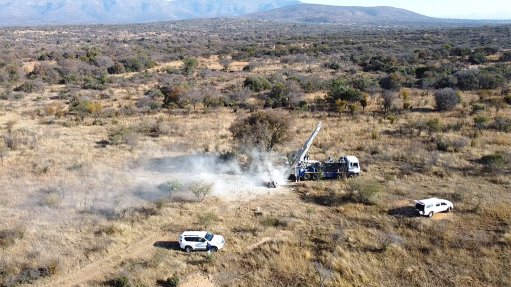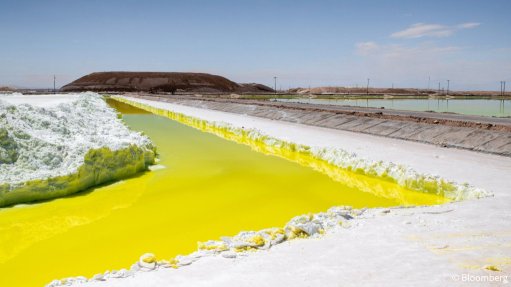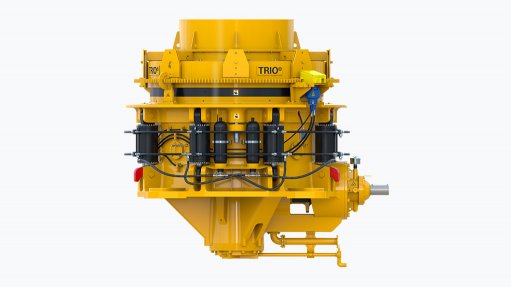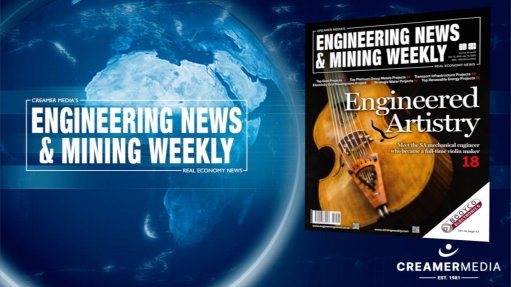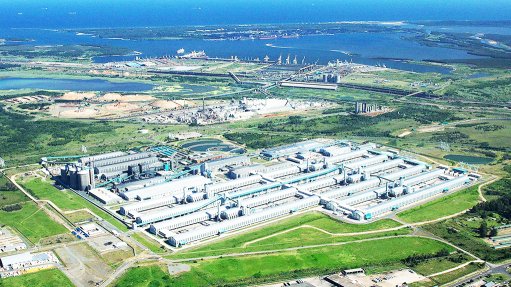Technology adoption shaping industry trajectory

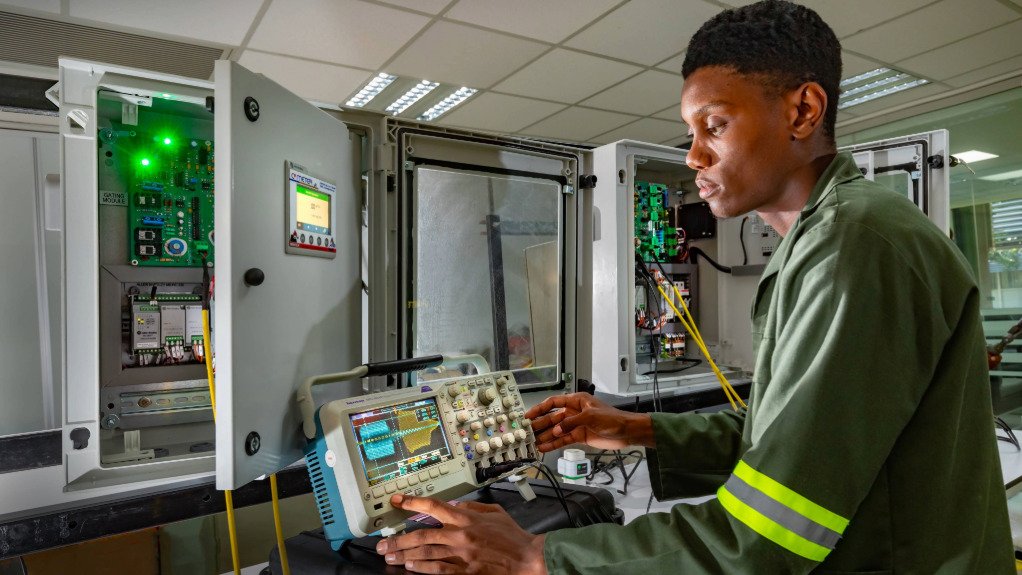

OPERATIONAL EFFICIENCY MATTERS Technologies aimed at developing a commercially and environmentally sustainable mining industry should be welcomed
DAVID PHILLPOTTS Mintek remains committed towards processing data, including minerological data, into models that can be used to generate knowledge and make process decisions for South Africa's extractives industry
Amid the increased presence of AI and the Fourth Industrial Revolution (4IR) in South Africa’s mining industry, technologies that are aimed at avoiding dirty, demanding and dangerous mining environments should be welcomed, says national minerals research organisation Mintek measurement and control executive manager David Phillpotts.
He highlights that these technologies would be beneficial in providing prescient insights into better managing mining processes in the long term.
While Phillpotts acknowledges the difficulty faced by the industry in acquiring and retaining skills, long-term knowledge and expertise in minerals beneficiation and processing, he says relevant technological advances could assist in bridging this gap.
Thus far, the significant trends that the organisation has identified include the emergence of predictive maintenance, where mining companies are using AI to determine the life span and serviceability of mining machinery, the maintenance requirements that accompany keeping mining equipment operational, and equipment performance diagnostics.
There is also ongoing interest regarding the use of digital twin technology, which emulates the performance of a physical plant to determine operational metrics.
“There are very few of them that are ‘actually true’ digital twins that truly mirror mineral processes, but there is certainly a big trend towards monitoring processes using technological models, which is a very positive thing, as it allows for further experimentation without much risk,” he adds.
Phillpotts also identifies the increasing roll-out of human presence monitoring in working mine areas to improve safety and keep personnel out of danger as another new mining technology trend.
In terms of minerals processing, he highlights the developments in flotation froth monitoring, which involves analysing froth characteristics – such as depth, texture, stability and colour – which can be used by advanced process control systems to optimise mineral separation efficiency, identify potential issues and improve plant productivity.
New mining technologies are also becoming increasingly effective in the use of sensors and detectors to monitor mobile and moving mining equipment and their potential interaction with personnel to prevent collisions and accidents.
Maintenance Challenges, Process Optimisation
In addressing some of the key challenges attributed to advancing technological innovations in mineral processing operations, Mintek highlights that some local mining companies have not adequately embraced the use of IT, while others have been slow to implement modern technological advancements.
Common problems that persist in the industry include missing measurements of key performance indicators (KPIs), low levels of digitalisation, and legacy systems, making it difficult to access reliable historical and long-term data for newer systems to be implemented.
In this regard, some mines might have a continuous store of digital data coming from a process, but struggle to reconcile the human actions involved in the process – which includes components, such as operator logbooks, experiment data, campaign data or data pertaining to the type of ore that is being processed – where all information has not necessarily been digitised at scale yet, says Mintek measurement and control 4IR research and development leader Dr William Shipman.
“Reconciling that to the historical online data that has been stored is often a challenge, making it difficult for data scientists to . . . use that data to build models or . . . AI because you don’t always know what the data represents.”
Inherent variability is a fundamental characteristic of mineral deposits and processes. The key factors that influence this include changes to the ore profile, the mineral processing plant succumbing to wear and tear, varying feed rates and different ore throughputs, adds Shipman.
Elaborating on the human-related challenges attributed to advancing technological innovations in mineral processes, Phillpotts notes that some mineral processing plant metallurgists and operators may lack the measurements and skills required to provide accurate data insights. This is often coupled with their constantly having to devote a substantial amount of time towards breakdowns in other areas of a processing plant.
For example, Mintek has machine vision offerings, which include their FloCam – a flotation froth monitoring system that uses cameras to monitor the state of froth on platinum group metal (PGM) concentrators. The data generated from this can be used by, for example, the Mintek FloatStar Control system on PGM concentrators, to make plant refinements based on measurements obtained using the FloCam.
Mintek has also recently developed and successfully tested a Reinforcement Learning Artificial Intelligence Mill Controller that is able to optimise the throughput of industrial milling circuits.
Mintek remains committed towards processing data, including mineralogical data, into models that can be used to generate knowledge and make process decisions for South Africa’s extractives industry, he notes.
Mintek has a mandate to conduct research and develop solutions to the problems encountered by the South African minerals and metallurgical industry and has a strong focus on optimising productivity and profitability in mineral processing plants.
The company encourages mining stakeholders to embrace and invest in new technologies to improve plant operations.
Article Enquiry
Email Article
Save Article
Feedback
To advertise email advertising@creamermedia.co.za or click here
Announcements
What's On
Subscribe to improve your user experience...
Option 1 (equivalent of R125 a month):
Receive a weekly copy of Creamer Media's Engineering News & Mining Weekly magazine
(print copy for those in South Africa and e-magazine for those outside of South Africa)
Receive daily email newsletters
Access to full search results
Access archive of magazine back copies
Access to Projects in Progress
Access to ONE Research Report of your choice in PDF format
Option 2 (equivalent of R375 a month):
All benefits from Option 1
PLUS
Access to Creamer Media's Research Channel Africa for ALL Research Reports, in PDF format, on various industrial and mining sectors
including Electricity; Water; Energy Transition; Hydrogen; Roads, Rail and Ports; Coal; Gold; Platinum; Battery Metals; etc.
Already a subscriber?
Forgotten your password?
Receive weekly copy of Creamer Media's Engineering News & Mining Weekly magazine (print copy for those in South Africa and e-magazine for those outside of South Africa)
➕
Recieve daily email newsletters
➕
Access to full search results
➕
Access archive of magazine back copies
➕
Access to Projects in Progress
➕
Access to ONE Research Report of your choice in PDF format
RESEARCH CHANNEL AFRICA
R4500 (equivalent of R375 a month)
SUBSCRIBEAll benefits from Option 1
➕
Access to Creamer Media's Research Channel Africa for ALL Research Reports on various industrial and mining sectors, in PDF format, including on:
Electricity
➕
Water
➕
Energy Transition
➕
Hydrogen
➕
Roads, Rail and Ports
➕
Coal
➕
Gold
➕
Platinum
➕
Battery Metals
➕
etc.
Receive all benefits from Option 1 or Option 2 delivered to numerous people at your company
➕
Multiple User names and Passwords for simultaneous log-ins
➕
Intranet integration access to all in your organisation









